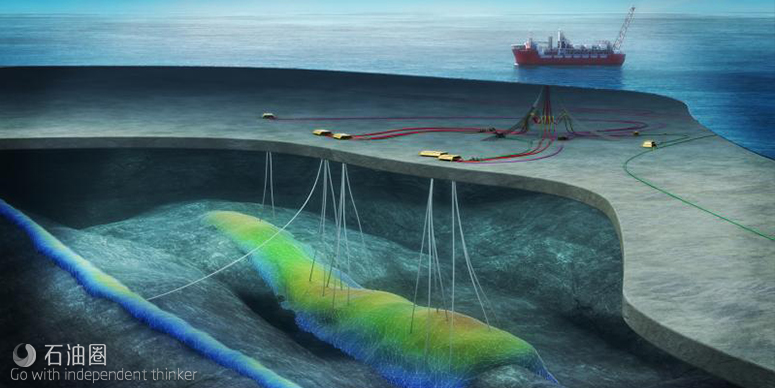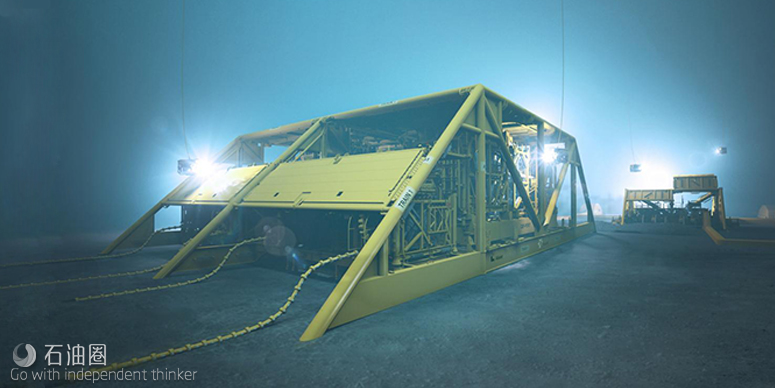Cooperating To Expedite Innovation In Subsea Oil, Gas Sector
Aker Solutions was awarded a contract from Aker BP to deliver the subsea production system for Phase 1 of the Ærfugl development offshore Norway. This will be the first installation of the company’s new vertical tree.
With hundreds of subsea trees and control systems deployed and many industry firsts under its belt, Aker Solutions continues to break new ground. The company is expanding its vertical tree offerings and investing in digital technology to improve products and extend competencies.
Evolving offerings
According to Sigurd Loftheim Dale, Aker Solutions engineering manager for the Johan Castberg, Troll and Askeladd projects, the shift to vertical tree development is representative of the company’s focus on changes in industry demands.
“Vertical trees are something we’ve seen more and more in recent years,” he said, adding that it is only in the last five years that Aker Solutions has supplied its first big vertical tree deliveries.
Dale attributed the shift to a drive for reducing rig time and saving on field development costs. He said the company’s newest vertical tree system and associated tools were developed to meet that industry need, focusing on safety and cost efficiency as priorities.
“We have been able to scrutinize and optimize rig operations,” Dale said, “and the result is that we have lowered product costs, lowered the handling weights, significantly reduced rig operations and have introduced safer maintainability, which translates into lower lifecycle costs.” The new design is the result of a long process of developing underlying technology and looking holistically at how the subsea system fits into the bigger field development program and asking critical questions, he said. “How do we handle this tree? How do we best install it? How do we best optimize how it is to be used?”
Aker BP’s gas condensate Ærfugl Field will see the first installation of the new tree. Ærfugl, formerly known as Snadd, lies approximately 210 km (130 miles) offshore Sandnessjøen in the Norwegian Sea. Trees of the same design will be used on the Johan Castberg, Troll and Askeladd fields.
Dale said the vertical tree system was requested by Statoil, which was looking for assistance in making the step from a horizontal to a vertical tree. “They initiated the project and have been a good collaboration partner in finding the right and optimal solution,” he said.
Aker Solutions delivered the world’s first subsea compression system for the Åsgard Field in 2015.
Additional awards
Aker Solutions also recently won key work supporting Statoil’s Johan Castberg Field—the largest oil discovery in the Norwegian Barents Sea, estimated to hold from 1.8 Bboe to 2.9 Bboe.
“We’ve been involved since day one of that development,” Dale said, adding that delays along the way have allowed the field to move from marginal to profitable. “We helped Statoil through concept studies, pre-FEEDs and FEEDs, eventually halving the development cost of that project.”
Statoil has challenged the company to develop a new standard for subsea production systems with the goal of improving efficiencies and reducing life-cycle costs. “That is key from a subsea point of view,” he said.
Like Johan Castberg, the recently awarded Askeladd project is in the Far North. According to Dale, the primary challenges in Arctic areas are the short installation window during the summer and the relatively long distance from shore. “Our main contribution has been to simplify installation operations and to optimize for batch operations, doing more installation work with less logistics to and from shore.” Having facilities in Hammerfest is an advantage here, he added, noting, “This is as close as you get. We are using our base there to mobilize equipment, refurbish tools and prepare installation packages.”
Aker Solutions also was awarded work on Troll, which contains about 40% of Norway’s offshore gas reserves. When asked about the challenges associated with the anticipated long field life, Dale replied, “When it comes to requirements for extended field life, they are not all that different to industry standards. It’s more along the lines of assuring good reliability. We have recent experience with life extension studies for already installed equipment, and that is helping us propose the right solutions for a field like Troll.”
Partners in technology
“Our relationship with Statoil when it comes to technology development is strong,” Dale said. “We have a collaborative approach. Whereas they are driving technology and development, we also are pushing Statoil to find the right set of requirements to find the best solutions.” This relationship gives Aker Solutions the ability to evaluate life-cycle perspectives of alternative technology proposals while at the same time contributing to the direction technology development takes.
Indicative of this partnership was the five-year framework agreement signed last year, contracting Aker Solutions to provide subsea services for Statoiloperated oil and gas fields offshore Norway beginning in first quarter 2018. The initial agreement provides work for the Aker Solutions service bases in Ågotnes and Hammerfest and covers subsea lifecycle services, including offshore installation and retrieval of equipment, maintenance, engineering and operations support.
Digital tools
One of the digital tools Aker Solutions is developing is the Vectus 6.0 subsea electronics module, which is designed to improve performance and lower project execution risks for subsea oil and gas installations.
Vectus is one of several Aker Solutions digital initiatives that will be under the “Software House” umbrella. According to Aker Solutions Chief Digital Officer Astrid Onsum, Software House projects will include field concept development, detailed engineering, maintenance and operations as well as decommissioning. “Software House is designed to bring all our software capabilities together with the aim of accelerating and enhancing our software development,” she said.
With the introduction of Vectus, which is the next-generation iteration of the company’s proprietary LINK subsea controls, Aker Solution has taken a step toward building the foundation for digitally enhanced subsea equipment. “Subsea will be an area of rapid digital change,” she said. “Today we are able to gather significantly more data than before. We can remotely configure equipment, monitor health and do diagnostics.”
The focus will continue to be on developing applications for condition monitoring, in time delivering predictive maintenance data. “Enhanced sensoring, machine learning and artificial intelligence all represent significant potential in the subsea environment and will be key enablers to the development of different business models,” Onsum said.
In February Aker Solutions laid the groundwork for long-term collaboration with software company Cognite to accelerate digital solutions development. The company plans to use Cognite’s advanced industrial data platform to collect and analyze large volumes of data from all types of industrial systems, ranging from real-time sensors to equipment hierarchies, maintenance logs, process diagrams and 3-D computeraided design models. These data will be used to provide solutions that enable customers to make informed decisions about an energy asset at any stage of its field life.
Building on success
Digital techniques already are being applied to improve manufacturing processes for subsea equipment, Onsum said. One example is the digital remote control rooms at Aker Solutions’ umbilical manufacturing center in Moss, Norway, which have lowered costs and improved safety, decreasing production time for umbilicals by about 30%.
Improvements like this will help enable developments in a lower oil price environment. Continuing investment will reduce costs, lower risks and improve performance, allowing operators to move beyond the limits of today’s technologies.

 石油圈
石油圈

